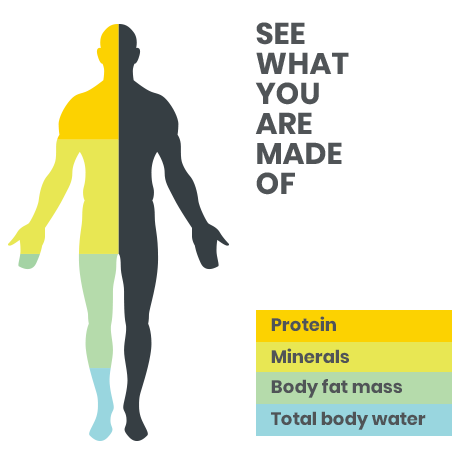It seems like everyone these days has some body composition goal! For some it’s gaining lean muscle mass, for others, it’s losing fat mass, and sometimes it’s both!
Let me set one thing straight before I continue, your weight and your body composition has nothing to do with your value! You are not “good” or “bad” based on the way you look, feel, or your health. My focus is on trying to improve your health, the way you live, and the way you feel.
Your health, is just that, yours! The number on the scale for your friend or family member doesn’t relate to yours at all. It’s personal. The clothing size you wear tells me nothing about your health and happiness.
Introducing Body Composition

The most common misconception I hear ( nearly every day ) is the classic, ” I need to lose weight,” or “I need to drop a few pounds.” My follow-up question is always, “of what?” The scale is deceptive, BMI is deceptive, and most metrics in social standards are fallible!
Okay, now that we’ve got that out in the open, let’s talk more about what it could mean to change your body composition.

Our body is made up of many materials: bone, muscle, fat, soft tissue, etc. The function of our body is dependent on all of these pieces working together in the right ratios and serving their purposes. Sometimes, we go through a season of eating more and moving less, which often results in our bodies storing more fat cells. For some, this shift is nothing notable, for others, it changes how they move and feel. The same is true if the opposite situation happens, someone has eaten less and moved more, and therefore their fat stores become depleted. Both have the potential to cause health concerns!
How To Change It
When we talk about changing body composition, the biggest idea to become familiar with is the concept of energy input versus output. Often the way this is portrayed is through the nutrition labels on our food. When we look at what is in what we eat, the first thing we see is the number of calories in the item. Now, this can sound scary, but don’t be discouraged. Reading nutrition labels is a great thing to learn, and I would highly recommend learning about nutrition if you ever have the chance. What I want to talk about is understanding the needs that your body has for fueling.
So, input versus output is the concept of how are we fueling the actions that we do, and does the fuel and action amounts equal each other?
One of the common ways to figure this out is looking at those calories eaten versus burned. This is a very effective way to examine your fueling methods, but it’s important not to let yourself get carried away by calorie tracking and obsessing over the numbers. This is not a post where I’m going to really deep dive into that but a future one might. Right now, lets talk about how this helps your body composition.
Deficit Versus Surplus
If you are looking to lose fat mass, you would want to put your energy balance in a deficit, meaning less in than out. This could look like a number of different habits, perhaps it means changing sedentary behavior, or not drinking soda. There is not a one-size-fits-all answer, but the concept stays the same. For gaining lean muscle mass (and fatmass) your best bet could be to eat good food and move your body consistently. As you have probably noticed, I am keeping my answers vague.

Each element of body composition is personalized! As is your plan. A plan all depends on who you are, your habits, and your likes/dislikes. Energy input and expenditure does not require any fancy materials or technology, although marketing ads would love to tell you otherwise! You can start with being aware of the amounts and timings of food and drink that you consume, and compare that with the amount of activity you have in your day. This could look like making sure you are eating only when you’re hungry, and being sure to move and get healthy activity throughout your day. No need to overcomplicate it! (coming up, I’ll have seperate posts on these subtopics)
If you do want to go the technology route; Fitbit, Apple, Garmin, and others have created some great wearable tech with functional interfaces to help you stay aware of your health metrics. Although, your strongest indicator for many of them might be your own experience and feelings. Similarly with fuel tracking, MyFitnessPal and other apps do a great job of helping you keep track of the food and drinks that you consume throuout your day.
Conclusion
Unfortunately, even the basics of body composition can be super confusing to get a handle on. My hope is that reading through this helped you understand a little bit more about the idea of the balance that is constantly going on within our body. This post can hardly sctratch the surface of the content that could be said about the structure of our body, the way to fuel it, and how to change body composition, so I simply hope you come away with the knowledge that they are all intertwined and exciting to work with!

Leave a Reply